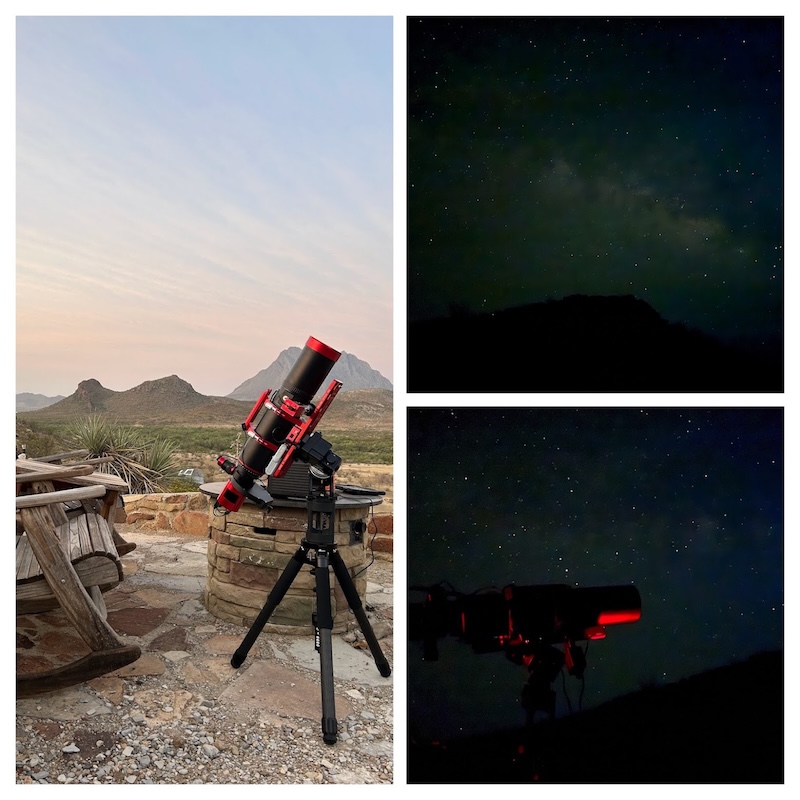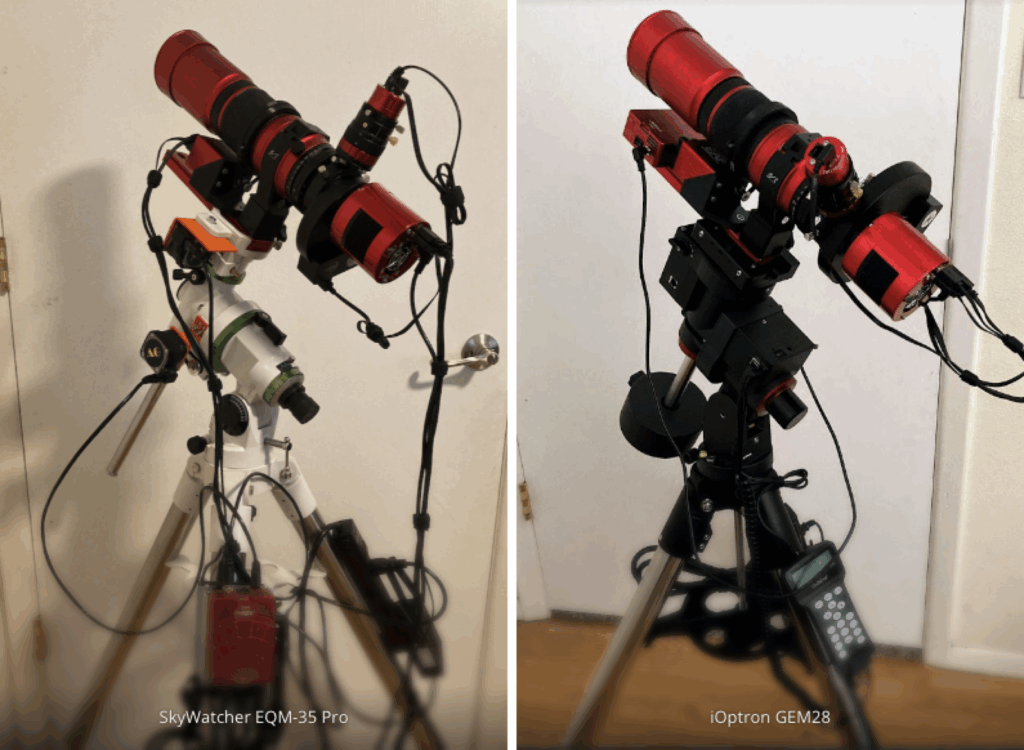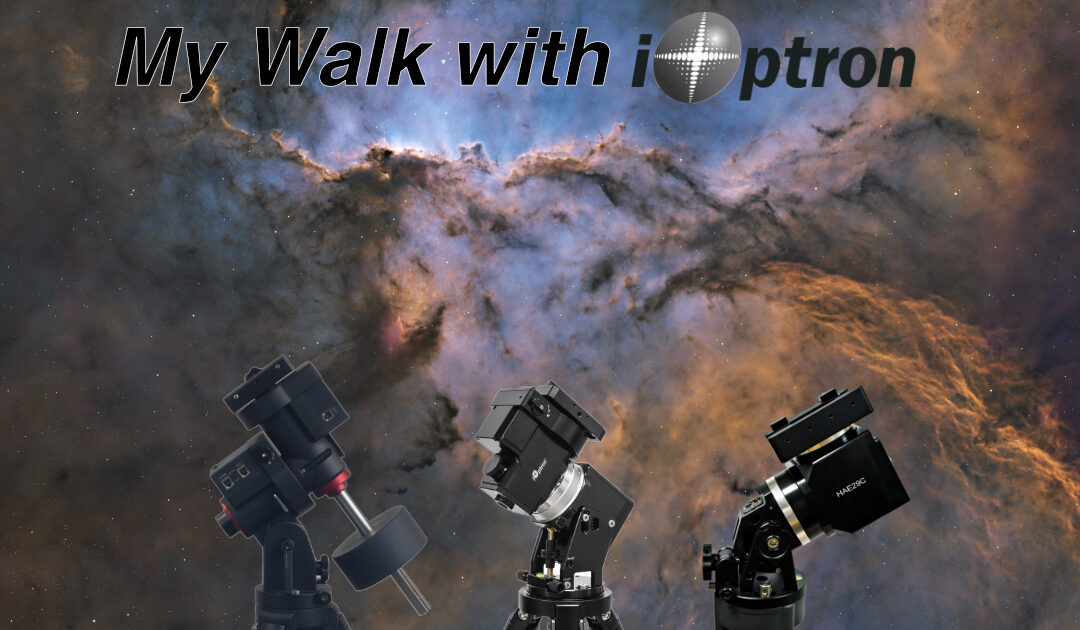
Back in October 2020, my astrophotography journey began with something simple and sentimental: a homemade barn door tracker, lovingly built by my father-in-law. I still have it today and yes, I still love it! That little tracker launched me into a deep obsession with capturing the night sky, and it’s been an incredible ride ever since.

Over the last five years, I’ve logged over 204 hours of integration time across 63 images on AstroBin. Each one representing not just time under the stars, but countless hours of planning, setup, imaging, and post-processing. I’m always pushing my gear to its limits. Sometimes I win…and sometimes, well, gravity gets the last word. That’s exactly what happened in Terlingua Texas. My second iOptron HEM27, which had been my trusted companion since November of 2023, took a fall and cracked the case, broke the lever, killed the hand controller, and damaged the RA gearing. Thankfully, the telescope wasn’t mounted at the time. Small mercy, but a big relief.

Here is an image of the mount two days before it would find itself in the dirt literally…

Thank the stars above my new RedCat 91 telescope was not on the mount when my HEM27 fell down. I shipped the HEM27 back to iOptron, and while it may be salvageable, I decided it was time for the next step and will be using my trade in credit to put it towards the HAE29C (https://www.ioptron.com/product-p/he292c.htm). The HAE29C brings a few standout upgrades that made the jump an easy decision. It uses strain wave gearing on both the RA and DEC axes, which means fewer moving parts, increased reliability, and no belts or worm gears to maintain. It also allows for quicker setup since I won’t need to balance the DEC axis like I did with the HEM27. The mount is fully Wi-Fi enabled out of the box, so there’s no need for a hand controller though if you prefer one, the Go2Nova controller 8411 is available as an optional add-on.
While I haven’t received the mount yet, based on early reviews and documentation, iOptron has made a number of thoughtful design improvements over the HEM27. The HAE29C appears to feature improved altitude and azimuth adjustment knobs for easier polar alignment, and the dovetail saddle now supports both Vixen and Losmandy plates without needing to remove the head like on the HEM27. They’ve also replaced the short azimuth locking screws with taller, more ergonomic versions, making them easier to grip and adjust in the field.
Now for a little backstory…my walk with iOptron began in August 2021 with the sleek GEM28, when I moved on from my SkyWatcher EQM. That switch marked the start of a new chapter—better guiding, more stability, and fewer cables. The GEM28 brought both performance and style to my setup, and I’ve been walking with iOptron ever since.

Then, in April 2023, I upgraded to the HEM27 and loved it so much, I picked up a second unit just seven months later in November so I could capture twice the light!

iOptron has been with me for nearly four years now. Through late nights, technical challenges, and even that Texas tumble, they’ve proven to be more than just a gear company. They’ve been a reliable partner on my astrophotography journey. Their support team has spent countless hours helping me with guiding and troubleshooting, patiently answering what I’m sure are questions they hear all the time. But they’ve always been good to me.
Right now, I’m firmly in the ZWO camp when it comes to gear—camera, filter wheel, guide camera, electronic auto focuser to even the ASIAIR. So you might be thinking: why not switch to the AM5N? Sure, I could have iOptron repair my HEM27, get it back to spec, and try to sell it as refurbished. But honestly, I just absolutely love iOptron. Their mounts aren’t just rock solid for lighter setups—they also offer an impressive range of equatorial and center-balanced mounts that can handle much larger rigs.
Yes, ZWO has the new AM5N that fixes lots of issues over their first gen AM5 that I slammed on YouTube and received quite the views on lol. They also offer the smaller AM3, but that’s it. If I ever end up with a permanent dome or Pier in the backyard and a larger telescope like a C14, ZWO simply won’t be able to support that kind of setup or weight. And while I do enjoy the simplicity and integration of the ASIAIR ecosystem, I’m starting to feel the limitations of its feature set and lack of thoughtfulness in their software design.
On my recent trip to Texas, my friend Eric, a fellow member of TAAS, was using N.I.N.A, which I had recommended to him. Watching him dive in, learn from YouTube, and figure it out with just a little help from me got me seriously thinking about switching as well. In fact, it’s motivated me to spend more time developing OpenAstro, my own project aimed at enabling full Windows-based control through ALPACA & ASCOM while still using a Raspberry Pi for my first phase. This way, I can keep my setup compact and portable while retaining the flexibility to control all my gear without being locked into a closed ecosystem.
So while ZWO is a household name in astrophotography, I’m still sticking with iOptron for my mounts. For me, it’s not just about the gear it’s about trust. They’re based here in the U.S., and their support has had my back through all of it… including when my mount literally ate dirt. So stay tuned as I will be releasing a YouTube and another blog post on the impressive iOptron HAE29C that will be incoming soon.
Till next time clear skies!
